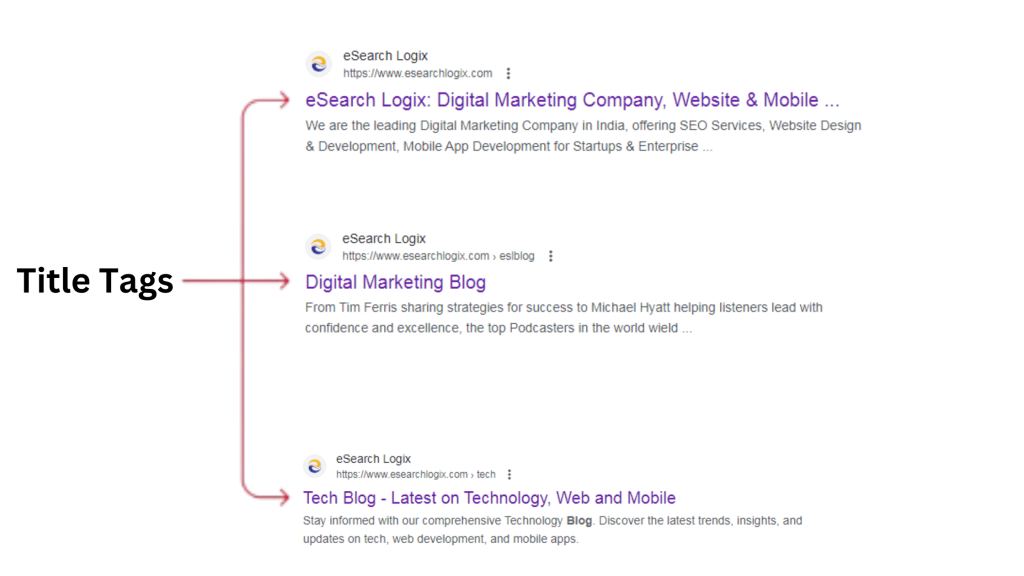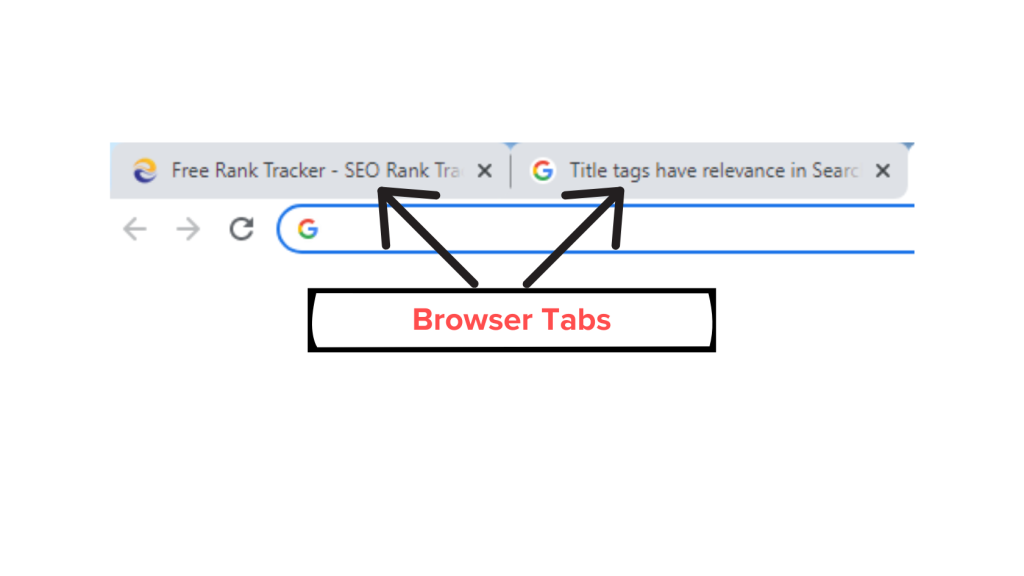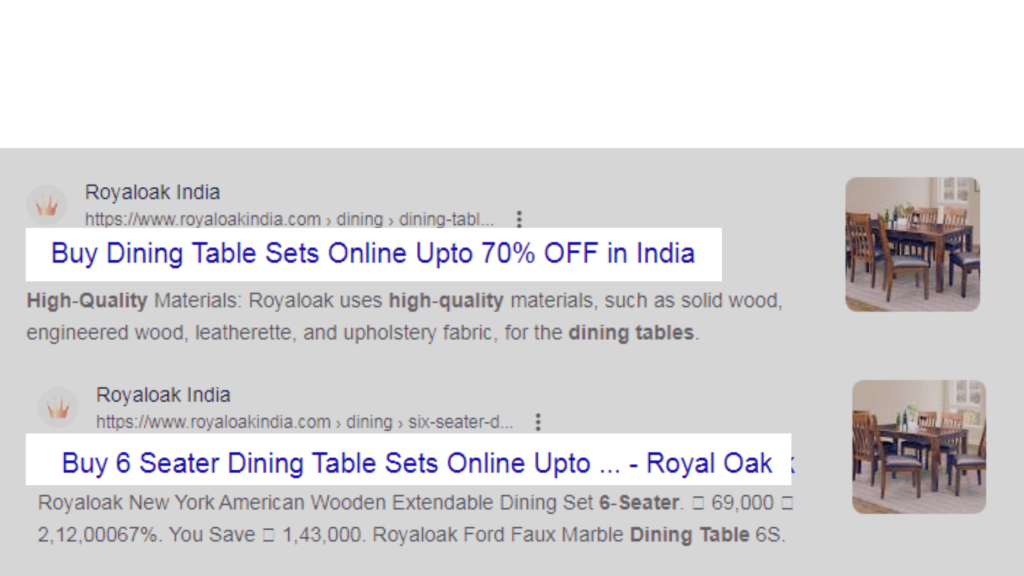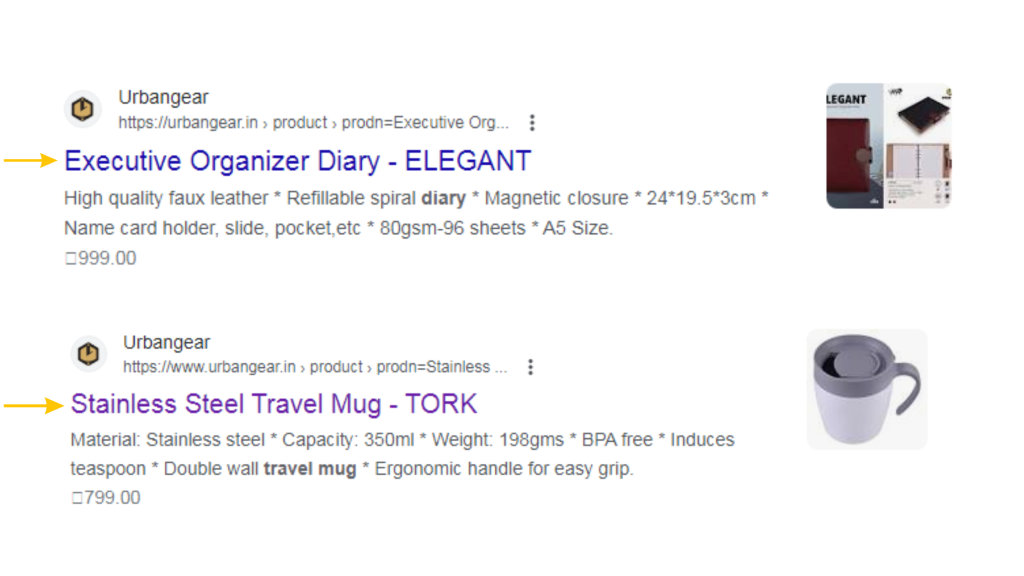Understanding the Role of Title tags in SEO
“Title tags and Meta descriptions for a website are what a cover is for a book. It may give a user a reason to select your web page among millions of options to choose from”.
What are Title Tags?
The title tag is an HTML element used for summarizing the main data of a web page. It is displayed as part of the search snippet in search engine results, social media posts, and browser tabs. It is often regarded as the Meta title, title tag, or SEO title. Title tags should provide an accurate and concise description of a web page.
Title tags are also regarded as title links, so that users can click on them to navigate through to a website.
Google may sometimes rewrite the title tags of your pages to fit the logic of their relevance. Stats show that Google rewrites title tags 33.4% of the time. (Ahrefs).
Title tags appear in the search results pages as blue text and links on the search engine results page (SERP), like this:

Title Tag appearing as an HTML code
The title tag of a web page can be found in the HTML markup. Some CMS platforms allow users to directly edit the title tag in the code or simply fill in the required field in the backend.

Why the title tag is relevant for SEO?
Title tags are a significant ranking factor for any website and are important for SEO for various reasons.

- The title tag is the key that helps search engines know what your page is all about and assess if it is relevant to the user’s search query.
- They serve like a headline, telling users what to expect when they click on them.
- They help the searchers understand the context of your page, so they can choose the most appropriate result for their query.
- They require little effort to implement effectively but can help you get significant SEO results.
- It is the first thing a user sees when they search for a particular keyword or phrase, so it is critical to ensure that it is relevant, informative, and enticing.
Google representatives and professional SEOs emphasize that the title is just one of the many factors that impact the rankings of a site, and the degree to which a title impacts search engine rankings cannot be stated in a definitive way.
How do title tags act as a “hook” for your advertising in the search engine results?
Title tags describe the content on each page of your website and indicate if it is relevant to a user’s search query. When you use title tags (along with great Meta descriptions) effectively and appropriately, they can act as a “hook” for your advertising in the search engine results.
Title tags have relevance in Search results.

A Google title tag enriches the user experience and encourages more people to click the link to a page. They are like key headlines that entice users to click on the results.
Title Tag Relevance in Browser Tabs

Title tags indicate to a browser how to display page titles in tabs, so the searcher can navigate to the correct page from multiple tabs that suit their search query.
It is important to keep in mind that the browser title tab takes the data entered into the <title> tag, which is also used in the SERP result if it is relevant to the copy on the page. However, if it is not relevant, Google will create a relevant title for the SERPs.
Title Tags relevance in SMO
Title tags and Meta descriptions are significant for social media optimization as well. Page descriptions are used by the majority of social networking sites and sharing tools to entice targeted audiences to click on them.
How do I optimize title tags for SEO?
When it comes to optimizing title tags, there are several best practices that can help you get the desired outcomes:
- Use relevant keywords: Relevant keywords in your title tag are the key to helping search engines understand the topic of your web page. One must avoid keyword stuffing, which can negatively impact your SEO efforts. Here are some things to consider for creating optimally optimized title tags:

- Use simple and more natural titles.
- Use only one target keyword in a given page’s title tag.
- Avoid keyword stuffing at all costs.
- Keep it brief. Title tags should be brief and to the point. When it comes to characters, the sweet spot for title tags is between 50 and 60 characters. Here are some tips to keep your title concise:

- Don’t type your title in all caps.
- Uppercase letters usually take up extra space, so it is better to avoid them.
- Avoid using your brand name unless it’s necessary.
- Save space by using appropriate symbols (i.e., “&” instead of and).
- Write your titles in no more than 66 characters.
- Write unique titles.

Unique titles influence searchers to click on your content. However, its uniqueness must not make it lose its relevance. Thus, it is important to make the page title more intuitive for the reader and the search engine. Here are some things to keep in mind:
- Write a catchy yet intuitive title.
- Make sure the title tag is unique for every page.
- Think about what you want the page to do and what your targeted audience is.
Things to do and avoid when writing relevant title tags
A well-written title tag catches the attention of users as well as search engines. Here are some of the things to do and avoid in the title tags:
Must have
- Brief, unique, and catchy
- One primary keyword
- The <title> element is present in the page’s HTML.
- It must accurately describe yaour page.
- The title length must be between 50 and 60 characters.
Must avoid
- Duplicate titles
- Too long title tags
- Too short title tags
- Over optimized title tags
- Keyword cannibalization
- Using inappropriate abbreviations
- Using upper-case letters
In order to understand it better, you must read how to create catchy and SEO-friendly title tags.
How to Create, Add or Edit Title Tags?
As you have understood the relevance of title tags, now let’s talk about how to include that title tag in your website HTML. There are primarily two ways to edit title tag: by directly editing the HTML, or by changing them in your website’s control panel.
Editing the HTML Title Tag
For changing your homepage’s title tag directly in your website’s HTML code, a website’s home page must be opened in a text editor or other coding. Home.html, index.html, and default.html are the typical filenames for homepages.
You will find the title tag nested inside the header tags near the top of your page in the given manner

Html title tag example
• The text between the opening and closing title tags, and, needs to be updated. , i.e. <title> and </title>.
• You can create or edit title tags through the control panel you use to create and edit website pages
• In order to make it work, you must maintain the structure of the opening <title> and closing </title> and just modify the text between them.
• Save the changes made to the title tag and keep in mind that it takes time to reflect in SERPs.
Changing the Title Tag in Control Panel
Most website nowadays are built with a Content Management System (CMS). One can easily create or edit title tags through the control panel used for creating and editing website pages. For this, you need to go to the section in CMS where you can change meta tags; You can get more information from your CMS provider’s support.
Some website builders generate title tags automatically, it may not be optimized for best results. If you are unable to find a simple way to change title tags in your control panel, you’ll need to edit the HTML code directly. Also consider, if your CMS is missing this feature, you have option for migrating to a better platform if you are concerned about increasing your website’s visibility.
How to add title tags on WIX site?
For adding a title tag and Meta description, you need to go to a page in the SEO Basics section of the page’s SEO panel.
- For adding a title tag and Meta description, go to your page’s SEO Settings:
- Create your title tag under heading “What’s the page’s title tag (title in search results)?.
- Create your meta description under What’s the page meta description (description in search results)?.
- Click Publish button at the top right of the Editor and you are done
The next time search engines crawl your website, they will update the title tag and Meta description of your page. If you want to speed up the process, you can submit your page’s URL to search engines. A website’s SEO settings can also be used to create title tags and meta descriptions to multiple pages at the same time.
How to Add or Edit Title Tags on WordPress Sites?
Many CMS don’t have option to add Meta tags through the control panel. In such cases, you need to install special plugins, such as Yoast SEO for WordPress.
Once the Yoast is activated on your site, you need to go to admin panel and enable the ability to edit the title tag and meta description.
Through the creation of templates based on a page type, the Yoast SEO tool enables users to add title and description elements in mass.
For adding title and description in bulk, you just need to click on Search Appearance under SEO in the left sidebar menu.
- When you reach the Yoast SEO settings, go to the bottom of the edit page and make your changes there.
- Select Edit snippet.
- To update the title tag, swap out the current SEO title with a title tag that is 60 to 70 characters long and optimized.
- In the Meta summary field, change it to a 150–160 character summary of the page.
- Click Close Snippet after editing.
- To finish, press Update in the upper right corner.
Conclusion
Title tags are important for search engines and users in many ways.
- Search engines: With powerful titles, search engines are able to better understand your content and offerings. It helps them rank your site on the relevant pages.
- UX: A well-written title tag provides clear and meaningful information to the users, which motivates them to click and find what they are actually looking for.
- Marketing: When titles are catchy and compelling with a call-to-action, they add value to your content and lead to higher CTR…
If you want to reap maximum benefits from your search engine optimization efforts, keep two considerations about meta-tags in mind.
First, it is necessary to create a separate and unique SEO title and Meta description tag for each web page. Secondly, when you create title tags and Meta descriptions, write them from the point of view of people who will potentially visit your website. You have just ten seconds to convince your web visitors to stick to your page and not move on to the pages of your competitors.
That’s where your Meta tags plays an important role as users see only your page title and description in the SERP and make a decision to stay or move on to next page on the basis of the text they see. Now that you know everything about title tags, it’s time to move one step further and learn about Meta descriptions and their relevance in SEO.







